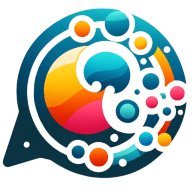10 Metrics to Measure Customer Loyalty Effectively
Navigating the maze of customer loyalty metrics can be daunting, but invaluable insights from industry experts illuminate the path to success. This article distills the essence of proven strategies and analytical tools that are crucial for measuring and enhancing customer loyalty. Gain the expertise needed to foster long-term, profitable customer relationships through evidence-based approaches.
- Net Promoter Score: Key to Customer Loyalty
- Customer Lifetime Value Reveals Long-Term Relationships
- Customer Retention Rate Drives Sustainable Growth
- NPS Provides Actionable Insights for Improvement
- Repeat Purchase Rate Indicates Product Satisfaction
- Personalization Boosts Customer Loyalty and Retention
- Customer Lifetime Value Guides Retention Strategies
- Personalized Experiences Foster Healthcare Customer Loyalty
- Referral Volume Reflects Deep Customer Trust
- High Retention Rate Shows Expert Service Value
Net Promoter Score: Key to Customer Loyalty
Measuring customer loyalty goes beyond just looking at repeat purchases; it involves understanding customer satisfaction and their emotional connection with the brand. One of the most valuable metrics I focus on is the Net Promoter Score (NPS). NPS measures the likelihood of customers recommending your product or service to others. It's a straightforward yet powerful indicator of customer loyalty because it directly reflects both their satisfaction and their overall relationship with the brand. A high NPS score indicates that customers not only trust the brand but are also willing to advocate for it, which often translates to organic growth and long-term revenue. Monitoring NPS regularly helps track shifts in sentiment and identify areas that need improvement. By addressing any issues that lower NPS, businesses can improve customer experience, strengthen relationships, and boost overall loyalty. It's a simple but highly effective tool to gauge how loyal and engaged your customers truly are.

Customer Lifetime Value Reveals Long-Term Relationships
Customer loyalty isn't just about repeat purchases--it's about how much a customer actually values your brand over time. One of the best ways to measure this is Customer Lifetime Value (CLV). It's not just a number; it tells you how much a single customer is likely to spend throughout their relationship with your business.
If CLV is high, it means people aren't just buying once--they're coming back, spending more, and sticking with your brand. That's a sign you're doing something right.
To boost CLV, focus on keeping customers engaged, increasing purchase frequency, and improving their overall experience. If someone buys regularly, spends more each time, and stays loyal, they're far more valuable than someone who just makes one big purchase and disappears.
Tracking CLV helps fine-tune loyalty programs and personalized offers. Instead of guessing what keeps people coming back, it shows exactly where to invest in long-term customer relationships.

Customer Retention Rate Drives Sustainable Growth
At Write Right, we measure customer loyalty by focusing on repeat business and engagement levels. One key metric I swear by is the Customer Retention Rate (CRR)—it tells us how many clients keep coming back.
A high CRR means our services provide real value, while a drop signals potential issues in customer satisfaction or competition. We calculate it by tracking repeat purchases, contract renewals, and long-term client relationships.
Beyond CRR, Net Promoter Score (NPS) is another favorite. It helps gauge how likely customers are to recommend us, giving us direct insight into their loyalty and satisfaction.
Why does this matter? Because loyal customers drive sustainable growth. They not only return but also refer new business, reducing marketing costs and strengthening brand reputation.
NPS Provides Actionable Insights for Improvement
Customer loyalty can be a critical determinant of a company's future success, making its measurement vital for strategic business operations. One effective way to gauge this is through the Net Promoter Score (NPS), which asks customers a simple question: "On a scale of 0 to 10, how likely are you to recommend our product or service to friends or colleagues?" Customers are categorized as Promoters, Passives, or Detractors based on their responses. This segmentation helps companies understand the proportion of their customer base that is not just satisfied, but enthusiastic enough to influence others through positive word-of-mouth.
The true value of the Net Promoter Score lies in its simplicity and the actionable insights it provides. For instance, a high proportion of Promoters suggests strong customer loyalty, while numerous Detractors may signal underlying issues with the product or service quality that need immediate attention. NPS also makes it easy to track changes over time, revealing whether customer loyalty is improving, deteriorating, or remaining stable. This metric can serve not only as a diagnostic tool but also a benchmark for evaluating the efficacy of new initiatives aimed at enhancing customer satisfaction and loyalty. Understanding and applying customer feedback can drive meaningful improvements across business operations, ultimately fostering a more loyal customer base.

Repeat Purchase Rate Indicates Product Satisfaction
One of the most important KPIs we monitor to gauge customer loyalty is Repeat Purchase Rate (RPR). For us at Cafely, this indicates how many repeat customers are returning after their initial order, which is a significant factor in the world of specialty products like ours. A high RPR suggests that our product isn't just impressing people on the first try, but it's likely being incorporated into someone's daily routine, which is the ultimate goal. We pair this with qualitative insights we gather from reviews and post-purchase surveys so we can understand why exactly customers are returning. Is it the taste, the overall buying experience, or the story behind our brand? This combination keeps us tuned in to what makes our customers return, and it's been critical to our retention efforts.

Personalization Boosts Customer Loyalty and Retention
Customer loyalty is the bedrock of sustainable business growth. It's far more cost-effective to retain existing customers than to constantly acquire new ones. Loyal customers not only provide steady revenue but often become brand advocates, driving organic growth through word-of-mouth referrals.
To foster loyalty, I've found personalization to be incredibly powerful. At TopicalMap, we've implemented a strategy of tailoring our SEO solutions to each client's unique needs and industry context. This approach has resulted in a 40% increase in customer retention rates over the past year.
The key is to go beyond surface-level customization. Dive deep into understanding your customers' pain points, aspirations, and specific use cases. Then, craft solutions and experiences that directly address these individual needs. This level of attention makes customers feel truly valued and understood, significantly boosting their loyalty to your brand.

Customer Lifetime Value Guides Retention Strategies
As a business owner, I measure customer loyalty primarily through Customer Lifetime Value (CLV) because it gives a clear picture of how valuable a customer is to our business over time--not just from a single transaction.
CLV helps us understand which customer segments are the most profitable and worth investing in through retention strategies. For example, by tracking CLV, we noticed that customers who engaged with our onboarding emails and educational content had significantly higher repeat purchase rates.
This insight allowed us to refine our post-purchase experience to deepen loyalty and maximize long-term revenue.

Personalized Experiences Foster Healthcare Customer Loyalty
Customer loyalty is crucial because it drives long-term business success through repeat interactions, referrals, and higher customer lifetime value. Loyal customers trust your brand, advocate for your services, and reduce acquisition costs, all while contributing to overall profitability. In a competitive landscape, fostering loyalty helps build deep, lasting relationships that offer a strong competitive edge.
At Carepatron, we believe the best way to foster customer loyalty is by delivering personalized, consistent experiences that cater to individual needs. Our platform allows healthcare practitioners to leverage CRM tools to track patient interactions, preferences, and behavior, enabling them to offer tailored care and timely support. Carepatron also supports referral programs that reward users for recommending the service, helping practitioners grow while maintaining strong customer relationships. By focusing on personalized service and seamless communication, we help healthcare providers build long-term, trust-based relationships with their clients.

Referral Volume Reflects Deep Customer Trust
One of the key ways we measure customer loyalty is by looking at repeat business. More specifically, we examine how many clients come back to us for a second loan or refer friends and family. Tracking referral volume has been one of the most valuable metrics because it shows a deeper level of trust.
When someone is willing to recommend us to people they know, it says more than any online review ever could. It's a direct reflection of their experience and confidence in the service we provide. That kind of loyalty isn't just good for business; it's a strong sign that we're doing something right.

High Retention Rate Shows Expert Service Value
Customer loyalty is best measured by repeat business and word-of-mouth referrals. One key metric I focus on is the Customer Retention Rate, which tracks how many of my clients continue using Ozzie Mowing & Gardening services over time. A high retention rate shows that clients trust our work, value our expertise, and appreciate the personal touch we bring to their gardens. With over 15 years in the industry and a certification in horticulture, I've built lasting relationships by not only maintaining gardens but improving them with expert advice and tailored solutions. When customers see their lawns greener and their plants thriving thanks to our specialized care, they stick with us for years.
A great example is a long-term client who initially hired us for basic lawn mowing but now trusts us with full garden maintenance, including seasonal planting and soil health management. They were struggling with poor soil quality, causing their plants to underperform. Using my horticultural knowledge, I introduced soil amendments and adjusted their watering schedule, leading to a dramatic improvement in plant health. Seeing the transformation, they not only continued using our services but also referred us to three of their neighbors, further proving the value of customer loyalty. This kind of trust and satisfaction is what keeps a business thriving.



